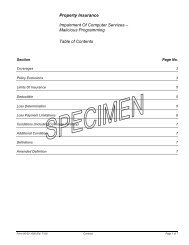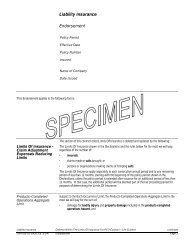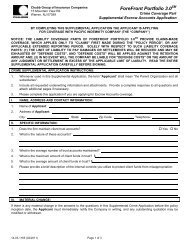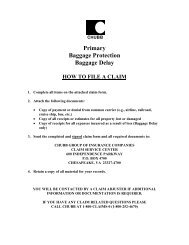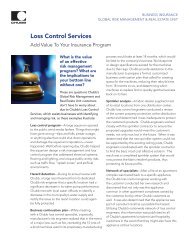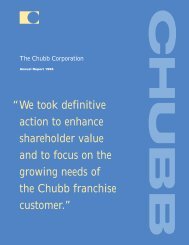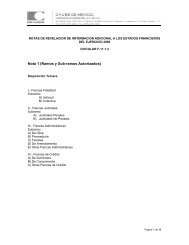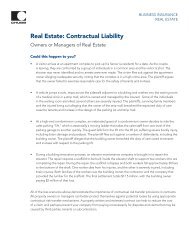Guide to Preventing Workplace Fraud - Chubb Group of Insurance ...
Guide to Preventing Workplace Fraud - Chubb Group of Insurance ...
Guide to Preventing Workplace Fraud - Chubb Group of Insurance ...
Create successful ePaper yourself
Turn your PDF publications into a flip-book with our unique Google optimized e-Paper software.
In many companies, vendor payments above a certain dollar amount are<br />
subject <strong>to</strong> closer scrutiny, higher level approvals, or special reporting. In<br />
these cases, <strong>to</strong> avoid detection, an employee may set up multiple ghost<br />
vendors and make only one or two smaller fraudulent payments <strong>to</strong> each.<br />
Companies should be alert <strong>to</strong> suspicious patterns <strong>of</strong> vendor payments,<br />
including those that are “just under the radar” in terms <strong>of</strong> required<br />
approvals, reporting, or other company procedures.<br />
Similar <strong>to</strong> a ghost vendor scheme is the dishonest employee who “takes over”<br />
a legitimate vendor account. In this case, the employee may simply change<br />
the mailing address shown in the vendor pr<strong>of</strong>ile for an inactive company <strong>to</strong><br />
one the employee controls. Of course, invoices begin <strong>to</strong> arrive from the<br />
formerly inactive company.<br />
Ghost-vendor schemes may also utilize company names that are intended <strong>to</strong><br />
be similar <strong>to</strong> well-known, established vendors (e.g., a legitimate vendor<br />
named “Robert Smith & Co.” may be reestablished as a ghost vendor under<br />
the name “Bob Smith” or “R. Smith”). A perpetra<strong>to</strong>r’s goal for establishing<br />
ghost vendors is <strong>to</strong> use name alignment as a tactic <strong>to</strong> reduce the chance <strong>of</strong><br />
detection. Of course, the phony vendor names are typically associated with a<br />
mailing address that is controlled by the perpetra<strong>to</strong>r. While this type <strong>of</strong><br />
scheme may sound simple, it <strong>of</strong>ten works.<br />
A dishonest employee may also set up, or be associated with, a real vendor<br />
doing actual business with the company (i.e., actually providing goods or<br />
services). In this circumstance, an employee’s association with the vendor<br />
may be kept hidden for a variety <strong>of</strong> reasons, including:<br />
■<br />
Company policy prohibiting conflicts <strong>of</strong> interest.<br />
■<br />
An employee’s desire <strong>to</strong> pr<strong>of</strong>it from a vendor arrangement (e.g.,<br />
reselling marked-up goods <strong>to</strong> the company at a pr<strong>of</strong>it, obtaining a<br />
kickback for steering business, or sharing in otherwise fictitious<br />
billings or overpayments).<br />
26



